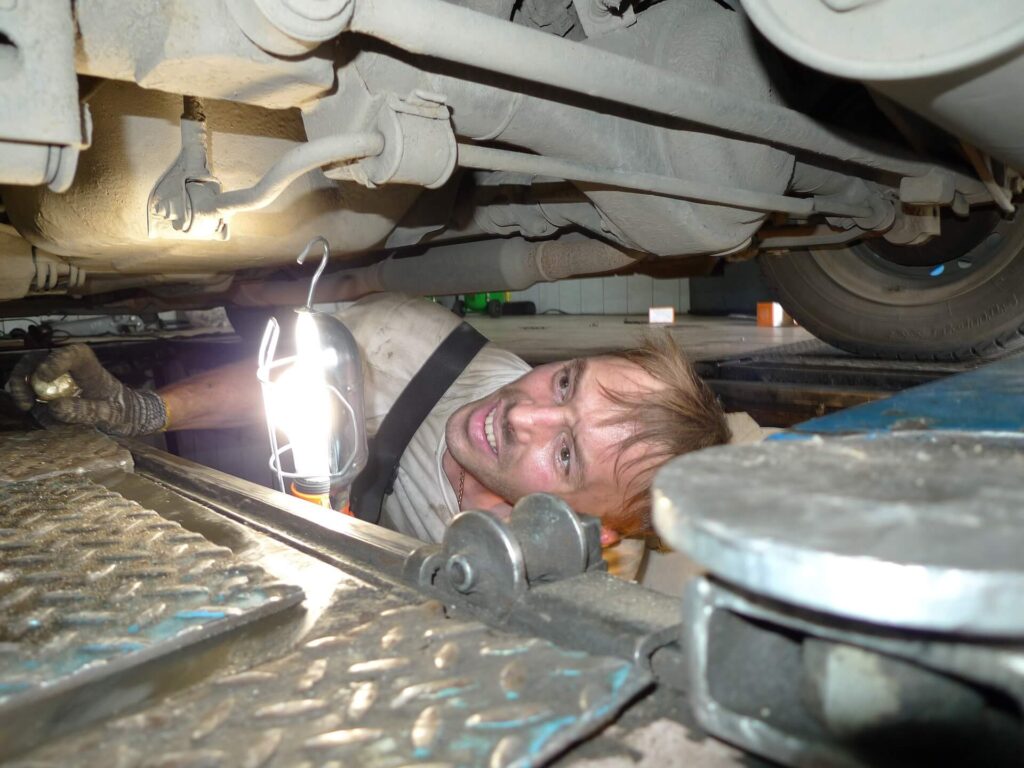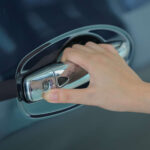Potholes are a common everyday sight, with road conditions worsening. So hearing a knocking noise every time you go over a tiny bump in the road means there’s probably something wrong with the car.
Usually, a rear-end clunking noise when going over bumps means a problem with a suspension component. But it’s not just the suspension problems that can cause clunking noises, which are also covered below.
Causes of a Rear-End Clunking Noise When Going over Bumps
The problems with some of the items below are pretty standard. For example, all rubber bushes on a vehicle suffer from similar issues. The bushes crack and perish with age, which means the bush will move around, often referred to as ‘excessive movement,’ which ultimately means they knock, rattle and clunk over bumps.
Suspension
Depending on the type of suspension/rear axle setup the car has, a knocking noise can be heard if any of the below is a problem:
- Trailing (radius) arm bushes – Trailing arms are the lower arm of the rear of a car. They house the rear coil spring, and the shock absorber bolts to it. They are secured into the axles via a pressed-in stiff rubber bush. Excessive play or movement in the bush results in creaking and knocking over bumps.
- Rear axle bushes – Rear axle bushes bolt the axle to the vehicle chassis and allow some movement. The bushes split and allow for too much movement with age.
- Multi-link suspension arm bushes/ball joints – A car with a multilink suspension design will have several small control arms, each having a bush or a ball joint. Again any excess movement in the bush will cause a clunking noise.
- Rear sway bar linkages – The sway bar stops the car from feeling like a boat when steering around corners by connecting the two sides of the vehicle via an arm with a linkage with two small ball joints. Ball joints are ball and socket-type joints which wear out eventually. They are a very common item to replace when a knocking is heard from the front or rear of the car.
- Rear strut top mounts – Top mounts connect the suspension legs to the car chassis. They are designed to absorb vibrations and movement when the car turns. Knocking noises can be heard when top mounts either fall apart (they have a plastic ring that acts as a bearing allowing the strut to rotate) or the rubber mounts wear out, and there is too much up-and-down movement in the top mount.
- Shock absorber strut – The shock absorbers do precisely as their name suggests. The shock absorber contains a rod with a plunger that compresses hydraulic fluid; the fluid can leak (very common), which means the rod can knock inside the housing. Although relatively rare, the rod can also snap, but this usually only happens when the car is involved in a crash.
- Bump stops – Bump stops can be found inside the coil spring and on the shock absorber strut to prevent the chassis from impacting the axle under heavy compression. Bump stops are typically made of foam and fall apart quickly. A bump stop usually only causes a problem when another suspension component fails, like the coil spring or shock absorbers.
- Coil springs – Coil springs are another form of vibration and bump absorber which also keeps the ride height correct and quickly returns to it after a bump: coil springs and wound metal rust and break. A rattling or knocking noise can be heard because the broken part of the spring is rattling in the spring pan, or what’s left of the coil spring is moving around over bumps in the road.
- Leaf spring – Leaf springs are old-fashioned and commonly found on trucks or larger vehicles. They consist of multiple layers of steel suspended that act as coil springs together—leaf springs typically rust and snap. The knocking noise is broken steel springs knocking against each other.
- Leaf spring shackle – As part of the leaf spring, the shackle hangs the leaf springs from the chassis. Depending on the design of the shackle, some of them have rubber bushes that perish and cause the shackle to knock. The shackle can also break, which causes the shackle to strike against the chassis or the leaf springs.
Just a note, as you can see, these don’t all apply to every car; if your vehicle doesn’t have leaf spring suspension, it’s not supposed to have it, so don’t panic.
Exhaust
The exhaust is suspended by rubber mountings running the length of the vehicle. If one of the rubber mountings breaks, the exhaust is no longer adequately supported; the exhaust can knock on the car’s underside or the axle. The rubber mounts are pushed onto a metal support hangar which can also break, causing the exhaust to move around and make horrible banging noises.
Another issue that can occur, although it doesn’t specifically cause a clunking noise but causes a rattle, is the exhaust heat shield is loose. It is there to protect the car’s underside from the exhaust heat. Usually made of steel or aluminum, they ruse through and become loose.
Lastly, there is one other problem with the exhaust, which can cause a knocking noise, and that is at the front of most exhausts is a flexible joint that allows the exhaust system to flex and move under acceleration and braking. If the Flexi joint weakens, the exhaust can move around excessively, causing a knocking noise at the car’s rear end.
Brakes
The brakes won’t come loose unless a bolt snaps for no reason, but that is not common. However, suppose the rear brakes were recently changed, and a brake caliper or the pad carrier was left loose. In that case, you could get a tapping noise when going over bumps. The noise is the metal-on-metal sound of the pads rattling in the carrier or the brake caliper knocking on the inside of the wheel.
Loose Items in the Trunk
You’d be surprised how common a knocking noise from the back of the car is not a mechanical issue but a silly one like some junk rattling around in the trunk. One thing to double-check is that the spare tire, tools, and jack are correctly secured.

Diagnosing Suspension Problems Causing a Clunking Noise
If the problems are not apparent by eye, diagnosing suspension problems will require getting under the vehicle and moving the bushes. Jack up the car, use axle stands for safety, and use a lever bar to try and move each ball joint, bush, wheel, and arm. It might require two people, but you need to feel each component; if there is too much movement or problem, you’ll feel the knocking in your hand.
This type of inspection is much easier with a ramp, so having a mechanic inspect the problem for you may be easier.
Preventing Problems
There isn’t a huge amount that can be done to prevent age-related problems with rubber bushes deteriorating. However, sticking to the car’s service schedule and having the vehicle inspected regularly will highlight any minor or future potential issues starting to appear with the suspension. By dealing with these issues early, you can prevent getting to the point where a repair is an emergency or the car has broken down.
Conclusion
A suspension-related issue is the most common cause of a rear knocking noise when going over bumps. Although, it is worth noting the other problems that can occur and the silly things like ensuring the spare tire and tools are correctly secure because if your car ends up at a garage for an inspection, it’s pretty embarrassing to hear the problem was the jack handle knocking on the spare tire well.
Suspension problems are reasonably straightforward to diagnose, but depending on the situation, replacing the items may require special tools that won’t be found in most home tool kits. In which case, have a mechanic replace these items for you; it will be much cheaper in the long run.









